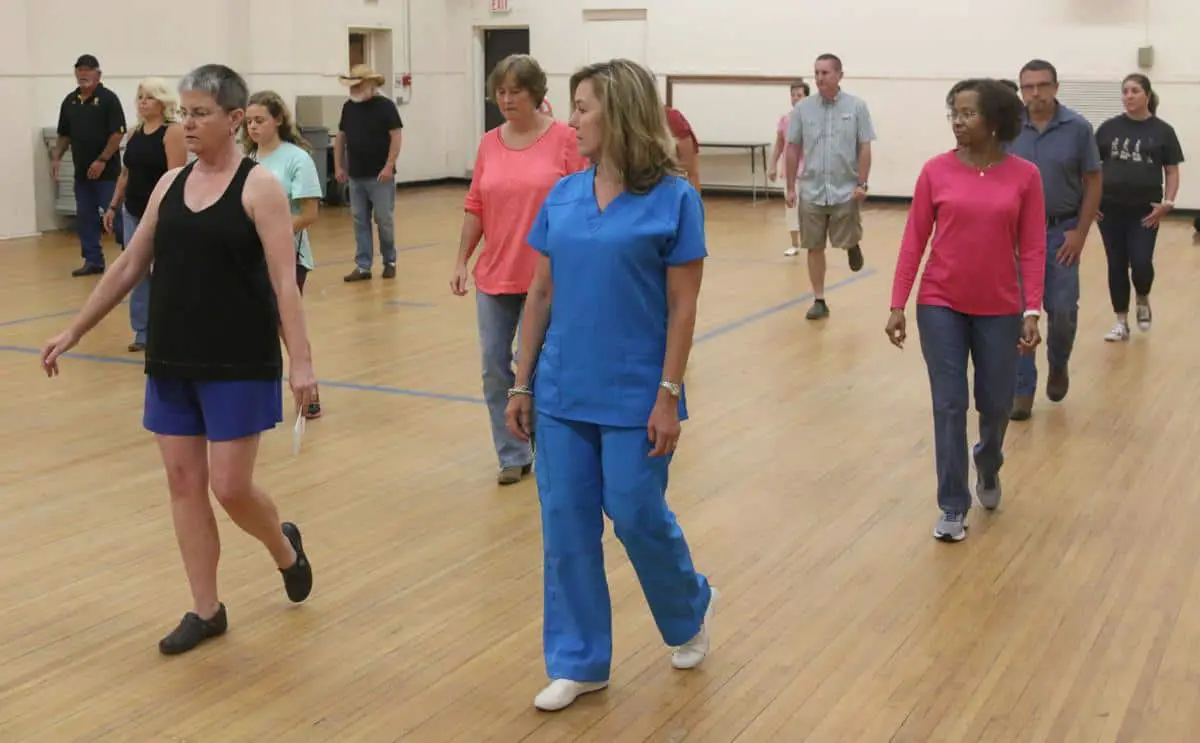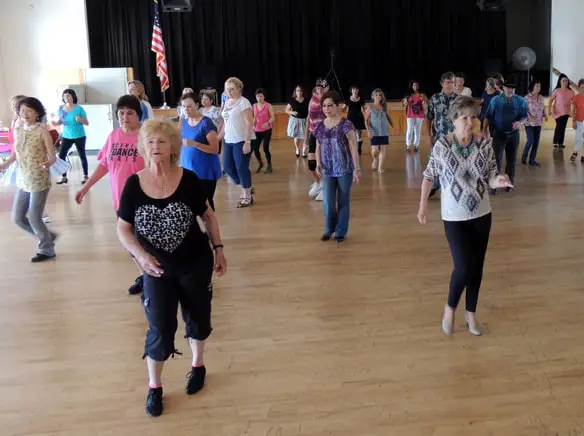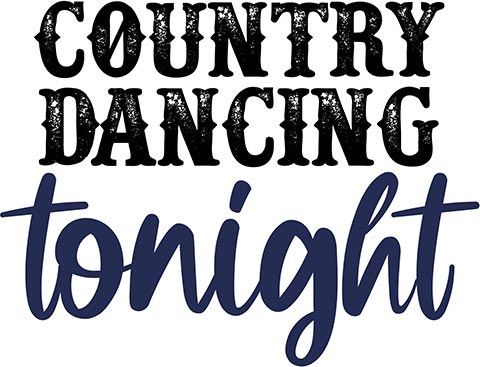According to health experts, line dancing is great for enhancing the cognitive and motor functions of the human body. So much so that it is used quite often in adult care centers for both physical and brain exercise. Compared to other dances, line dancing is exclusively beneficial for brain development.
Line dancing improves brain function by generating new synapses between neurons and enhancing mood, memory, and motor functions. Taking part in regular line dance sessions has been observed to be effective in treating some chronic neurological diseases such as Alzheimer’s disease, Dementia, and depression.
Yes, line dancing is good for the brain!
Though people of all ages can benefit from line dancing it is particularly beneficial for the elderly as they are often affected by neurological illnesses. To find out more about how line dancing benefits our senior community click here for a more in-depth article that goes beyond just how it benefits our brains.
Line Dancing Enhances MOOD, MEMORY & MOTOR Functions!
Besides increasing connections between neurons, line dance also helps to improve neuromuscular activity, thought process, etc. To get my pretty elaborate answer to this question “Is line dancing good for the brain?” please read on!

Can Line Dancing Improve Your Brain Function?
Dancing has been observed to improve both the mind and the body. In recent studies, line dancing has been proven to be effective in improving neurological functions.
Line dancing requires body movements accompanied by complex brain functions. This increase of brain activity helps both normal and cognitively impaired patients to develop new synapses and improve connections between neurons. This increased connection allows for better memory recall and problem-solving capabilities.
It is in effect exercise, but of both the body and mind. It strengthens muscle, coordination and the mental facilities.
While line dancing, the dancer has to maintain careful coordination between their hands, eyes, legs, ears, etc. It requires maintaining a sort of harmony between different senses and parts of the body. This improves the dancer’s multitasking capability without even knowing it.
Line dancing can also improve your emotional state. Depression has been a subject of great concern among psychologists throughout the 21st century.
Because of our fast way of life in this day and age, there is hardly any time for exercise. Because of this, depression is running rampant, particularly in young adults.
Line dancing can help to reduce depression. It involves socialization, play, and emotional expression. All of which when performed release various neurochemicals from our brain, which then elevate and help our mood and sense of well-being.
So, in short, line dancing can and does improve brain function!

How Does Line Dancing Improve Your Brain?
Line dancing helps your brain in various ways. Neurons are the structural and functional units of the brain. These neurons diminish in time.
For their proper maintenance, a special type of protein called a growth factor is required. Growth factors maintain structural integrity and heal the damage of the neurons. Line dancing generates and stimulates these growth factors!
But how does line dancing do it? Line dancing involves both motor functions as well as brain functions. Line dancing comprises intricate movements of different body parts and precise coordination.
Because line dancing requires subtle movements and hand-eye coordination, it kick starts the beneficial growth hormones we need.
Stress can harm our brain in the long term. It can damage our brain cells and cause various mental health issues including memory loss.
Line dancing positively affects our mind and it can relieve stress. It makes new connections between synapses. So, our brain can function better to increase memory and other functions as well. Line dancing helps to improve awareness of our surroundings, making us more agile and ready for the easier day to day activities.
So, here’s how line dancing can help to improve your brain:

How Line Dancing Can Help Brain Function of the Elderly?
As we get older, obviously we face a progressive degeneration in both our brain and body. At almost 60 years of age, this crosses my mind more and more these days. And as we enter retirement there is a long leisure period ahead. While this is something to look forward to, it is also believed this slowing down of our lives and being sedentary is a contributing factor to Dementia.
However, different physical activities are known to reduce this risk! A very important study from 2003 showed that those who participate in line dancing are least prone to progressive Dementia!
Perception of the surroundings and deciding accordingly becomes impaired in old age. Cognitive and spatial awareness diminish as time goes by. Engaging in regular dance activities, especially line dance improves thinking and reasoning. It is particularly helpful for old people which is has been proven actually by numerous studies.

Parkinson’s disease is one of the most common diseases when it comes to the elderly. Its severity can be mitigated by line dancing. The dopamine hormone which is essential for voluntary movement and coordination is reduced as Parkinson’s disease progresses. This results in slow movement, stiff joints, and a decline in motor response.
The Hippocampus is a part of the brain which is associated with age-related neurological diseases. But it can increases in size and function by physical activities, especially dance. Line dance improves its function more than normal physical activities do. Also, a surge in dopamine secretion occurs. It is believed this is why drastic improvements are seen in Parkinson’s disease patients that line dance!
Heart disease is a major concern for old people. Regular line dancing increases blood circulation and increases blood flow to the heart. Also, dopamine released by dancing can correct low blood pressure. It prevents occurrences like fainting or collapsing which could be fatal in the case of elderly people.
Line Dancing Can Make You Happier
Dancing inevitably makes you happier. You may not understand how exactly it makes you happy, but it does do the trick! The science behind it is that dancing to music alone or in a group releases a neurochemical called dopamine.
It is a reward factor for the brain and its only function is to make you feel happy and content. So, following that explanation the more you dance, the happier you are.
Line dancing is also a fun way to get some exercise done. There are a lot of fitness enthusiasts who live and breathe exercise. But that is not the case for the majority of people. So, a form of exercise that doesn’t feel like exercise could be beneficial for a lot of people.
This is where dancing comes in. It is a work of pure joy and amusement but does the important job of providing some well needed exercise.
Of course, activities like running or skipping burn more calories. But dancing releases the previously mentioned ‘feel good’ hormone, in addition to burning calories. So, you will get a lot of positive feelings by dancing while reaping the benefits of the exercise as well.
A healthy body itself can make you a happier person. I’m sure you’ve heard the phrase “A sound mind lives in a sound body”. And that is very true. Owning a healthy body is sure to make you happier whether you are young or old.
Human beings are social creatures, no matter how much we ignore it. This is a straight-up fact. One of the key reasons behind the global depression crisis is the absence of human interaction. Dancing can solve this problem.
In dance sessions, we meet different people. This induces interactions and we can share our thoughts or problems with them. In short, we get the chance to do some socializing. More socializing can, I would say, almost always results in less depression.
Conclusion
So, is line dancing good for the brain? The answer is a resounding yes! Line dancing helps to improve memory, mood and prevent Dementia, Parkinson’s disease, and other neurological diseases. It also helps people to stay happy and socialize which have their own mental health benefits as well.
Well, hopefully the ideas I’ve presented give you a little boost and motivation to keep line dancing! It is fun, but so beneficial! If you are already a line dancer, I think you will already whole-heartedly agree!

Seems like Dr Sklar feels that memorized step dancing (line dancing) is not effective. … only novel, improvised dancing (like partner dancing) is effective and measured in the 2003 study..
Good catch. That is interesting. I looked at the study and don’t see that, but maybe she found more on it. But it seems to me that the sweet spot might be just to always be learning new line dances! It seems like the mental focus it takes to learn new choreography (mental & physical), might be a more challenging thing than just spontaneous partner dancing. Who knows! I guess just do both and you are probably covered!